By David Alan Johnson
At about 2:30 on the morning of August 21, 1942, U.S. Marine units east of Henderson Field on the embattled island of Guadalcanal were awakened by several bursts of machinegun fire. Marine outposts on the west bank of Alligator Creek also heard the firing. But the noise soon slackened off, and everyone decided that the exchange had only been a patrol action between a listening post on the perimeter and an advance Japanese unit.
This was nothing out of the ordinary. Every night brought some sort of contact with small enemy patrols. The Marines had been on Guadalcanal only since August 7, exactly two weeks before, but certain routines had already been established.
The American landings on this island in the southern Solomons chain had taken the Japanese completely by surprise. By the following day, the Marines had accomplished their objective of securing Tulagi, Gavutu, and Tanambogo, small islands north of Guadalcanal. They had also accomplished their main objective on Guadalcanal—capturing the vitally important Japanese airfield near Lunga Point that was still under construction. They named the airfield Henderson Field after Major Lofton Henderson, a Marine flyer who had been killed in action at the Battle of Midway two and a half months before.
The Japanese Offensive on Guadalcanal
While Henderson Field was being completed, Marine units formed a defensive semicircle around it. Maj. Gen. Alexander Vandegrift, commander of the Marines on Guadalcanal, realized that an enemy counterattack was only a matter of time. Japanese cruisers and destroyers had already made their first move toward retaking the island and its airfield. On August 8, the night after the Marine units landed on Guadalcanal, three American cruisers and one Australian cruiser had been sunk at the Battle of Savo Island, which had been fought within sight of the Marines on Guadalcanal.
All U.S. naval forces had been withdrawn from the area after Savo, leaving the Marines on their own. A counterattack was the logical next step for the enemy. Vandergrift ordered all 11,000 of his men inside the defensive perimeter, along with all food supplies and ammunition. The Marines completed the airfield and waited.
General Vandegrift was absolutely correct in his assumption regarding a Japanese counterattack. Imperial General Headquarters (IGHQ) in Tokyo may have been surprised by the landings, but the Japanese were quick to react. The first meeting of the joint Army and Navy contingents at IGHQ took place on August 7, just hours after the Marines had come ashore. At first, the senior officers concluded that what had happened on Guadalcanal was only a reconnaissance in force, but aerial and naval reconnaissance provided evidence that an entire division of Marines had landed.
This was an accurate estimate. The unit that had come ashore was the 1st Marine Division, minus one of its regiments. The evaluation was summarily downgraded, however, when a senior staff officer from Rabaul flew to Guadalcanal to observe the enemy for himself. The officer could not see very much movement from the reconnaissance plane, and it seemed to him that the Marine contingent was a lot smaller than a division. He concluded that the Americans had withdrawn most of their troops because of their losses at Savo, and he reported his opinions to Tokyo.
On August 12, IGHQ assigned Seventeenth Army, commanded by Lt. Gen. Harukichi Hyakutake, the task of retaking Guadalcanal. Several of Seventeenth Army’s units had already been sent to participate in the New Guinea campaign, but the 35th Infantry Brigade, the 4th Infantry Regiment, and the 28th Infantry Regiment were available for assignment. The 28th Regiment, under the command of Colonel Kiyono Ichiki, was stationed at Guam and was closest to Guadalcanal.
General Hyakutake ordered an advance detachment of about 900 men to land on Guadalcanal before the rest of the regiment. This first element, including Colonel Ichiki himself, was put ashore by Destroyer Squadron 2 of the Imperial Japanese Navy on August 19 along with ammunition, supplies, and enough rations for seven days.
The men and their supplies were put ashore at Taivu Point at around 1 am. Colonel Ichiki left about 100 men behind to look after the supplies while he and the rest began trudging through the jungle toward Lunga Point. Before dawn, Ichiki made camp about nine miles from the Lunga defensive perimeter.
Colonel Ichiki had been an instructor at the Army’s Infantry School, where he acquired a reputation as a first-rate infantry tactician. He was also known to be impulsive and something of a hothead. Before he left Truk for Guadalcanal, Ichiki was advised to avoid frontal attacks. It was good advice, but whoever gave it did not know Ichiki or his temperament.
As soon as he came ashore at Taivu Point, Ichiki radioed the Japanese base at Rabaul on the island of New Britain, “We have succeeded in invasion.” According to his orders, Ichiki was to wait until the second half of his unit arrived before trying to retake Henderson Field, but he was confident that his men would have no trouble wiping out any Americans they encountered.
Ichiki had very little use for Americans and thought his men would be able to dispose of them without the rest of his unit. His confidence was given an added boost during his march eastward from Taivu. “No enemy at all,” he radioed Rabaul. “Like marching through a no-man’s-land.” It seemed to him that the cowardly Americans were avoiding contact.
Japan’s Plans Revealed
Ichiki did not know that the Americans had broken the Japanese naval code and that General Vandegrift was well aware that an attack was imminent. On August 8, Station Hypo, an intelligence unit in Hawaii, intercepted and decoded a message that connected Ichiki’s unit with Destroyer Squadron 2. Six days later, another interception disclosed that “IKKI” detachment’s destination was “RXI,” and should arrive on the 18th. RXI was the naval code for Guadalcanal. As soon as he received this information, Admiral Chester Nimitz, the U.S. Navy’s senior commander in the Pacific, immediately notified General Vandegrift to expect an attack as early as August 20.
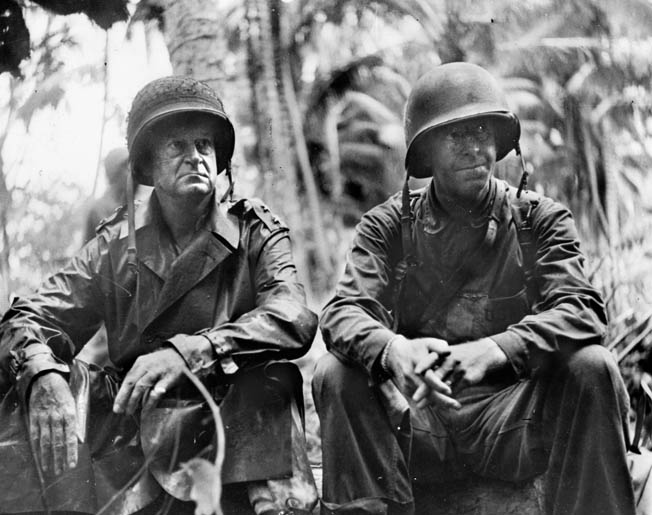
Vandegrift also received news of an imminent Japanese attack from other sources. On August 19, a force of 60 Marines led by Captain Charles H. Brush was alerted by native guides that a Japanese patrol was approaching. Captain Brush and his men had already left the Lunga perimeter to investigate a report of a Japanese force to the east. They encountered the scouting patrol, 37 men sent by Colonel Ichiki, around noon. In a fight that lasted less than an hour, the Marines killed all but five of the enemy. The survivors ran off to warn Colonel Ichiki.
Captain Brush examined the dead Japanese and, mainly by their brand new uniforms and shiny boots, concluded that they had just landed on Guadalcanal. Diaries and maps were also found on the dead soldiers. Brush and his men gathered all the papers and headed back to the perimeter. In the fighting, he had lost three men along with three wounded.
The papers disclosed that the Japanese had come from Guam and had just landed on Guadalcanal, as Captain Brush had concluded, but the size of the enemy force was not mentioned. Neither was its immediate intention. Vandegrift decided to stay inside the Lunga perimeter and wait for the Japanese to make the next move. If they wanted to take the airfield, they would have to attack the perimeter regardless of how many had landed, and he would be ready and waiting.
News of the strength of Ichiki’s force came from an unexpected source. A native scout, Sgt. Maj. Jacob Vouza, discovered the Ichiki detachment on August 20. Vouza was a retired member of the British Solomon Islands Constabulary and volunteered to work for the Americans against the Japanese. He was captured while attempting to get closer to the Japanese camp and brought to Colonel Ichiki for interrogation.
When Vouza refused to answer any questions, his captors tied him to a tree and searched him. They discovered a small American flag hidden in his clothing, a souvenir given to him by the Marines. Incensed by this and by the fact that Vouza refused to talk, the soldiers hit him in the face with their rifle butts, bayoneted him several times, and finally stabbed him in the throat and left him for dead.
Although Vouza had been badly hurt and was losing blood, he was far from dead. He managed to chew through the grass ropes that kept him tied to the tree and painfully made his way toward the Lunga perimeter. A Marine sentry found him, and Vouza was shortly rasping out a description of the Japanese unit he had been observing. Vouza was taken to a field hospital, where he began an almost miraculous recovery. Within two weeks, he was back on his feet.
An Impulsive Attack
By this time, Ichiki had already disregarded his orders and had begun his attack. First contact between the Japanese and the Marines was made at about 2:30 am on August 21. It soon became apparent that the noise that had awakened the Marines east of Henderson Field was not just a routine patrol action. The Marines on Alligator Creek’s west bank were startled by a green flare that arced overhead, a signal for Ichiki’s 2nd Company to charge against them.
Alligator Creek is not much of a waterway, flowing primarily after a rainstorm. Its mouth is blocked by a sandbar. Two battalions of Marines had taken up positions on the west side of the creek and strung a single strand of barbed wire across the sandbar, running north to south. Several machine guns and 37mm cannons also covered the sandbar. If the enemy decided to charge the Marine positions on the west bank, the sandbar was the most logical place to cross the creek.
This is exactly where Ichiki intended to cross. He wanted his men to charge through the Marine lines and capture the former camp of the 11th Construction Unit, which had been building the airfield when the Americans landed. Then they were to take the airfield.
Ichiki’s impulsive nature had clearly gotten the better of his ability as an infantry tactician. Two Marine battalions commanded by Lt. Col. Edwin A. Pollack stared across the sandbar at the gathering enemy attack.
There was not much to see—the night was absolutely black—but Pollack and his men could hear the enemy soldiers screaming and shouting, working themselves into a frenzy. Before 2 am, they heard sand crunching under boots. Someone fired a flare. Its light cast an eerie green glow on the Japanese attackers as they began advancing across the sandbar. The Marines waited until Ichiki’s men were halfway across before opening fire.
The Japanese charged at the Marine line, shouting and shrieking. “Squad after squad, platoon after platoon, burst from the covering darkness of the coconut grove to dash against the line,” reported one account. The Japanese ran in a slightly stooped position with bayonets thrust forward; officers waved their swords. The firing from the Marine positions drowned out the shouting as the men of Ichiki’s detachment ran forward.
Rifles and machine guns let loose with what seemed to be an enormous single muzzle flash. The 37mm cannons added to the noise with rounds of canister that tore into the enemy. Although the fire took its terrible toll, killing and wounding dozens of Japanese before they could even get close to the Marine lines, the survivors kept coming. When they reached the western side of the sandbar, the barbed wire stopped them about 90 feet in front of the Marines. More of Ichiki’s men were killed as they became tangled in the wire.
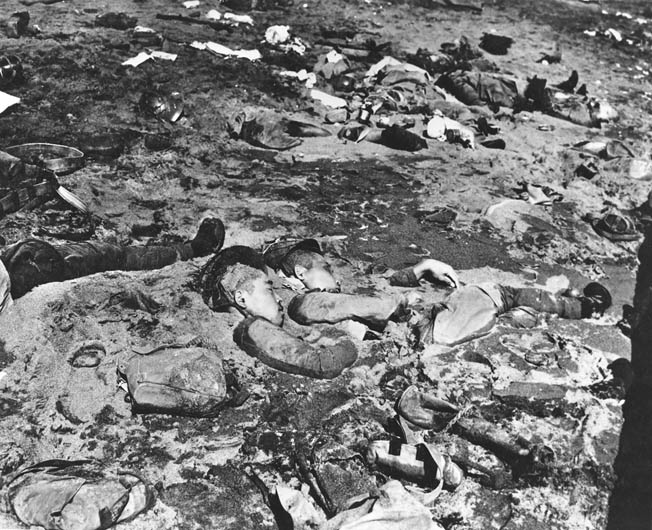
Some of the Japanese officers thought the fence must have been electrified because so many men were stopped in front of it and were examining the wire. For most of them, it was their last act on earth. Others were not as curious and cut their way through it. Even after the canister, the machine guns, and the barbed wire, enough of 2nd Company managed to get beyond the fence to charge at the Marines with bayonets.
“Stay Low and Squeeze Them Off”
The Marines of G Company set up a 60mm mortar section and began dropping shells on the edge of the coconut grove. The mortars were aimed almost perfectly; bodies and parts of bodies flew into the air along with great splashes of mud and bits of palm tree. Japanese soldiers in the vicinity tried to make a break for it and ran from the target area as fast as they could. As soon as they became visible, they were cut down by rifle fire from the other side of Alligator Creek.
Pollack’s men stood their ground in spite of the fact that this was the first combat for most of them. An American writer described them as “grass-green, but resolute.” As author Richard B. Frank put it, “For all they knew it was always supposed to be like this.”
Ichiki’s men were anything but green. They were veterans. Most of them had been in combat as far back as 1937 and showed it, charging into Marine positions with fixed bayonets as though they did it every day. But the Marines were just as determined. A rifleman with 2nd Battalion recalled, “Colonel Pollack was standing and walking around erect, telling everyone to stay low and squeeze them off.”
Pollack was doing his best to keep his men’s morale up. One Marine remembered, “His Jeep was parked nearby with bullet holes in it. Jap bodies covered the sandspit from the water’s edge slightly behind us to the opposite grove across the lagoon.”
One encounter between Ichiki’s men and Pollack’s 2nd Battalion involved a three-man machine-gun crew behind a log and dirt shelter just yards from the sandbar. Private Johnny Rivers fired his .30-caliber machine gun at the oncoming enemy until he was killed, shot in the face. As he died, Private Rivers continued to fire another 200 rounds. Corporal Lee Diamond replaced Rivers and kept shooting until he was wounded in the arm. The third member of the crew, Private Al Schmid, took over and fired until an exploding grenade blinded him.
Schmid and Diamond then worked together to keep the gun going. Diamond, who could see, directed Schmid’s fire, and Schmid, who had the use of both arms, fired where Diamond told him. This episode was dramatized in the 1945 film Pride of the Marines. Diamond and Schmid both received the Navy Cross for their action at the sandbar, and Schmid eventually regained partial sight in one eye.
“Once in There, Don’t Hold Back”
The 37mm guns also kept up their truly withering fire, expending so much canister that their barrels glowed in the dark. The two guns not only played a major role in stopping Ichiki’s attack but apparently broke up a planned second attack as well. Ichiki tried outflanking the Marine line by sending a company around the barbed wire, through the surf. Machine-gun fire and canister stopped this maneuver before it could develop into an attack. Dozens of Japanese dead washed up on the shore and were half buried in the sand.
All of Ichiki’s attempts to break through the American defenses had ended in disaster. He ordered the rest of his troops to pull back into a coconut grove about 200 yards east of the sandbar, but the thought of giving up had not occurred to him. The attempt to outflank the Marines through the surf had taken place at 5:30 am. When the sun rose a short while later, Ichiki and his men were still lying low in the coconut grove. Apparently, the new plan was to wait until nightfall before charging at the Marines again. The Americans guessed what Ichiki was up to.
“We aren’t about to let those people lay up there all day,” announced Colonel Clifton B. Cates, commander of the 1st Marine Regiment. “We’ve got to get them out today.”
His method for getting the Japanese out of the grove was to outflank them. Cates ordered four rifle companies under Lt. Col. Leonard B. Cresswell to cross Alligator Creek about a mile and a half south of the sandbar and attack what was left of Ichiki’s unit. A platoon of Stuart light tanks accompanied Cresswell’s men to give them fire support. Each Stuart carried a 37mm cannon and machine guns. Before setting out, Cresswell was told, “Once in there, don’t hold back.”
The advance began around 8 am, but the Marines found themselves slowed by the thick jungle, which was literally impenetrable in some places. The tank support also had problems. The dry creek bed clogged the treads of the Stuarts, preventing them from following the riflemen. The attack was nearly two hours late. Vandegrift was not at all happy when he heard about the delay and gave Cates a tongue lashing Cates described as “billy-hell.”
The Marines crossed Alligator Creek, turned north, and chopped their way toward the coconut grove. Three of the four companies swung east away from the grove and then turned westward to approach Ichiki’s position. Company D continued north, parallel with the creek. The idea was to cut off all escape routes, back the Japanese into the sea, and corner them against the sandbar.
Company C made contact with the Japanese around noon. Ichiki’s troops reacted with machine-gun fire and then with the customary bayonet charge. The Marines stopped the charge with a fusillade of well-directed rifle fire. The other three companies continued toward the grove as quickly as the jungle would allow while encountering little opposition. By early afternoon, Ichiki’s men had been compressed into a triangle-shaped area at the mouth of Alligator Creek, boxed in between the sandbar and the sea.
Deciding that nothing should be left to chance, Cates ordered four Stuart tanks across the sandbar into the coconut grove. Correspondent Richard Tregaskis had been watching Japanese soldiers running along the strip of beach along the northern edge of the palm grove—“black violently moving blobs.” Shortly afterward, Tregaskis heard rifle fire from the Marine lines and saw the black blobs drop onto the sand. The first sign of the tanks was a rumbling of powerful engines behind the correspondent. The four Stuarts clattered toward the sandbar and the Japanese positions beyond.
M3A1 Stuart: The Meat Grinder of Guadalcanal
The M3A1 Stuart was a light (14-ton) tank, but it was just right for this assignment. It was light enough get around the palm trees and heavily armed to pound the Japanese sheltering in the grove. Tregaskis watched as the “awful machines” rattled toward the edge of the grove and began flushing the enemy soldiers from among the trees. “It was like a comedy of toys, something unbelievable, to see them knocking over palm trees,” he later wrote.
The 37mm guns fired round after round at Ichiki’s soldiers, spewing sheets of orange flame. Sometimes the tanks would fire into clumps of underbrush, where Japanese machine-gun positions had been hidden. The rattle of machine-gun fire would quickly be overcome by the heavier reports of 37mm cannon.
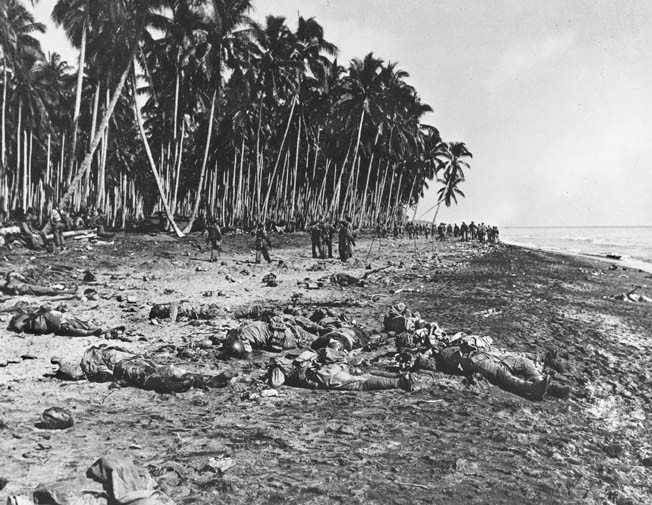
One of the tanks came to a sudden stop, crippled after one of its tracks was blown off by a grenade or antitank mine. The other three tanks moved to remove the crew. After performing their errand of mercy, the remaining Stuarts went back to their job of flushing out the enemy.
Cates, fearing that all the tanks might be knocked out with no one to rescue their crews, sent a radio message to the tank commander, ordering him to withdraw from the grove. But the commander, Lieutenant Leo Case, snapped back, “Leave us alone. We are too busy killing Japs.”
The Stuarts went on blasting the enemy, running over bodies of Japanese dead and wounded. The roots of the coconut trees, which were large and thick and sometimes protruded several feet above the ground, saved the lives of several Japanese. One of the fortunate few was Sergeant Sadanobu Okada of Ichiki’s headquarters unit. Okada played dead as the tanks rolled in. One drove right over him, but a coconut root took the tank’s full weight. When the three Stuarts returned to the American lines, they literally dripped with blood. Vandegrift wrote, “The rear of the tanks looked like meat grinders.”
Ichiki’s men fought back. As Cresswell’s rifle companies advanced from the jungle, Japanese rifle and machine-gun fire surprised the Marines. Several of them were hit.
“There was now bitter fighting in the grove,” Tregaskis noted. “We realized that the tanks had not mopped up completely, for we could still hear the snapping of Jap machine-gun and rifle fire.” Cresswell’s men kept moving forward.
“Like everyone else,” a Marine with the headquarters company recalled, “Burnham and I had fired our rifles and emptied our cartridge belts—100 rounds and then some.”
The only escape for the Japanese was the sea. Many of them made a run for it but were cut down by rifle fire before they could get as far as the beach. Those who managed to get to the water bobbed about on the surface, with only the black dots of their heads showing. Marines shot at the dots and killed many more of the enemy in the water.
Those who managed to escape headed east, away from the grove, and ran into Creswell’s fourth rifle company, Company C, and newly arrived Grumman F4F Wildcat fighter planes. The Wildcats, which had arrived on the 20th, strafed the beach. The remaining handful of survivors straggled back to Taivu Point.
“These People Refuse to Surrender”
The Battle of the Tenaru, as it was called, was over by 5 pm. The battle was actually misnamed. The Marines thought they were fighting at the Tenaru River, which is actually about 2,000 yards to the east, so history books continued to call the battle by its incorrect name for years afterward. And Alligator Creek itself is actually misnamed—the reptiles that inhabit it are in fact crocodiles. The fight is also known as the Battle of the Ilu River.
Marines wandered out into the coconut grove to get a closer look at the scene, collect souvenirs, and tend the wounded. Some of Ichiki’s men were not about to let the battle end and decided to take at least one of the enemy with them when they died. Japanese soldiers pretending to be dead shot several Marines; others used grenades to blow themselves up along with an unsuspecting Marine. Three officers, including Cresswell, were startled when a Japanese sergeant suddenly sat up and tried to shoot them. When his automatic pistol failed to fire, he turned it on himself. This time it worked, and blew the top of his head off.
The word spread quickly—Japanese who appeared to be dead should still be considered dangerous. Taking no chances, the Marines put bullets into every enemy corpse that happened to be nearby.
“I watched our men standing in a shooting-gallery line, thumping bullets into the piles of Jap carcasses,” Tregaskis wrote in his diary. “The edge of the water grew brown and muddy. Some said the blood of the Jap carcasses was staining the ocean.”
This ruthless fighting came as a shock to Americans. Even senior officers were taken aback. “These people refuse to surrender,” Vandegrift wrote to Marine Corps commandant General Thomas Holcomb. “The injured wait until men come up to examine them … and blow themselves and the other fellow to pieces with a hand grenade. You can readily see the answer to this.”
Ichiki’s men certainly preferred death to surrender. Only 15 Japanese were taken prisoner, and only one gave himself up voluntarily. The rest were dead—790 men. Among them was Colonel Ichiki, although exactly how he died has never been discovered. According to the official Japanese version, Ichiki ordered the regimental colors burned and then committed ritual suicide. However, Japanese witnesses insist that he was killed in the fighting in the vicinity of the sandbar.
Marine Pfc. Andy Poliny claimed to have shot Ichiki. According to this account, Poliny saw a wounded Japanese officer roll over and shoot a Marine in the face with a small-caliber pistol. Poliny rushed over with his Browning Automatic Rifle and fired several rounds into the officer. He was certain that the Japanese officer was Colonel Ichiki.
The Marines were relieved that the battle was over and even more relieved that they had lived through it. Thirty-eight of their number had been killed in the fighting, and another 78 were wounded. But there was almost as much revulsion as rejoicing over what had taken place in the coconut grove and at the sandbar.
“Well of course I went down and viewed the battlefield,” a Marine officer stated. “When you haven’t seen war before and you see the remains of 700-800 men lying dead, it is a shattering experience….You looked and thought, ‘There but for the grace of God go I.’”
By the following day, unburied Japanese bodies had begun to swell and change color in the tropical heat, but on the day of the battle they had not yet started to turn. Some of the dead looked quite peaceful, as though they had drifted off to sleep at low tide.
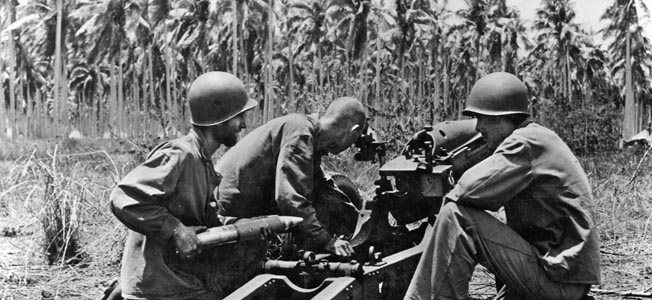
There was nothing peaceful about the scene in the grove. “We saw groups of Jap bodies torn apart by our artillery fire, their remains fried by the blast of the shells,” one observer wrote. Cates remarked that he had not seen anything more terrible throughout World War I.
Photographers took still pictures and film of the enemy dead. One photographer was told by his superior to stop filming—the images were too graphic, he was told. They showed the war as it was, and the American public was not ready for anything that raw. The Marine did what he was told. He stopped taking pictures but did send the films he had taken of the dead to Marine headquarters. His commanding officer was wrong. The motion pictures he had taken were released to the newsreels without a single cut.
One officer appraised Ichiki’s assault bluntly. “Ichiki was a fool for attacking so hastily,” he said many years after the war ended, “not waiting for the rest of his regiment.”
“The Marines’ First Stand-Up Fight”
When news of the Ichiki debacle reached Rabaul, the reports were initially dismissed. On the night of August 21, the Seventeenth Army headquarters received a message, “The First Echelon of the Ichiki Detachment was almost annihilated this morning at a point near the airfield.”
Lieutenant Colonel Hiroshi Matsumoto, the operations officer who had met with Ichiki shortly before his detachment left for Guadalcanal, told the commander of Seventeenth Army that it was a false report. It did not seem possible that Colonel Ichiki, a veteran whom Matsumoto knew personally, had been killed along with most of his men.
Two days later, the Japanese at Rabaul were optimistic. “Gunfire still heard near the airfield,” read one report. “Aircraft with lights are flying all over the place.” IGHQ in Tokyo was informed, “The Ichiki Detachment is still in good shape near the airfield. They are apparently still storming it.”
A report from one of the survivors of Alligator Creek brought home the terrible truth. At 10 am on August 23, Lieutenant Yoshiaki Sakakibana radioed Rabaul from Taivu Point, “The detachment’s losses have been fairly large, but now we are holding firmly the area around Taivu Point and we have some ammunition and foodstuffs.”
Sakakibana went on to report that Colonel Ichiki had been killed in the fighting and that 100 men were isolated at Taivu Point. Both Tokyo and Rabaul were completely taken aback.
General Hyakutake did his best to put a brave face on the unexpected rout and radioed Tokyo: “The attack of the Ichiki Detachment was not entirely successful.” He also suggested that another attempt to retake the airfield be planned as soon as possible.
For the Americans, the battle proved that they could fight Japanese troops in the jungle and win. The Marines had faced a veteran Japanese unit and prevailed. “They ain’t supermen,” a Marine corporal explained. “They’re just tricky bastards.”
U.S. naval historian Samuel Eliot Morison said the same thing somewhat more elegantly: “The Marines’ first stand-up fight with the much-touted jungle-fighting Jap, it [the battle] proved to the Corps and their countrymen that the American was the better fighting man, even on the enemy’s chosen terrain.”
Six months after the Battle of the Tenaru, the Japanese withdrew from Guadalcanal. The campaign for control of the island proved a turning point in the Pacific War and steeled American soldiers and Marines for more brutal fighting that lay ahead. One American historian wrote, “If the Japanese wanted to fight to the death with no quarter asked or given, the Marines were ready to oblige them fully.”
Originally Published October 17, 2016
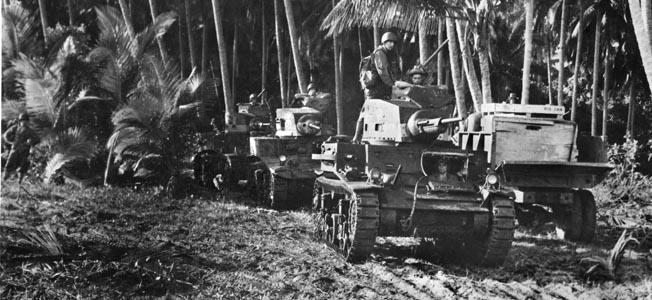
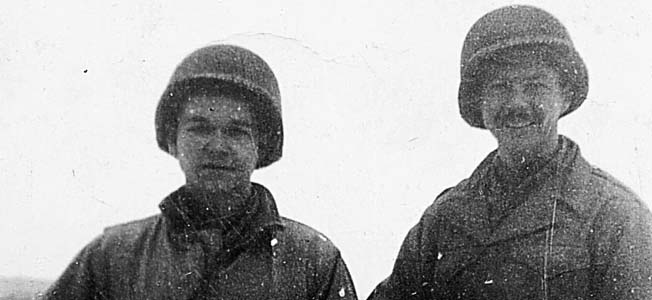
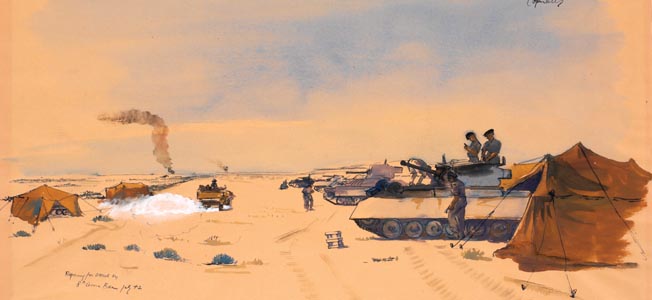
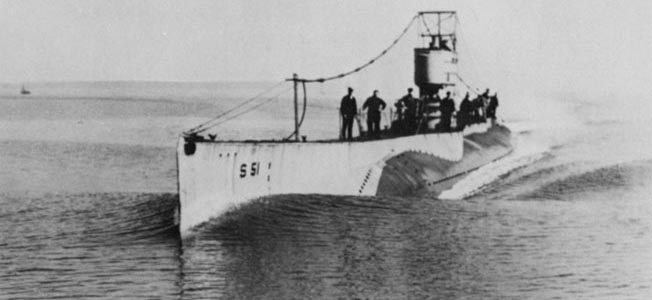
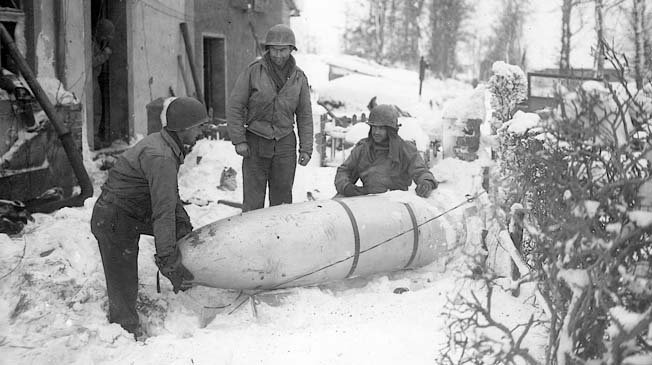
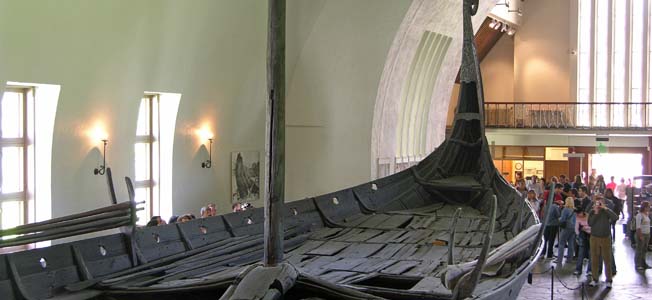
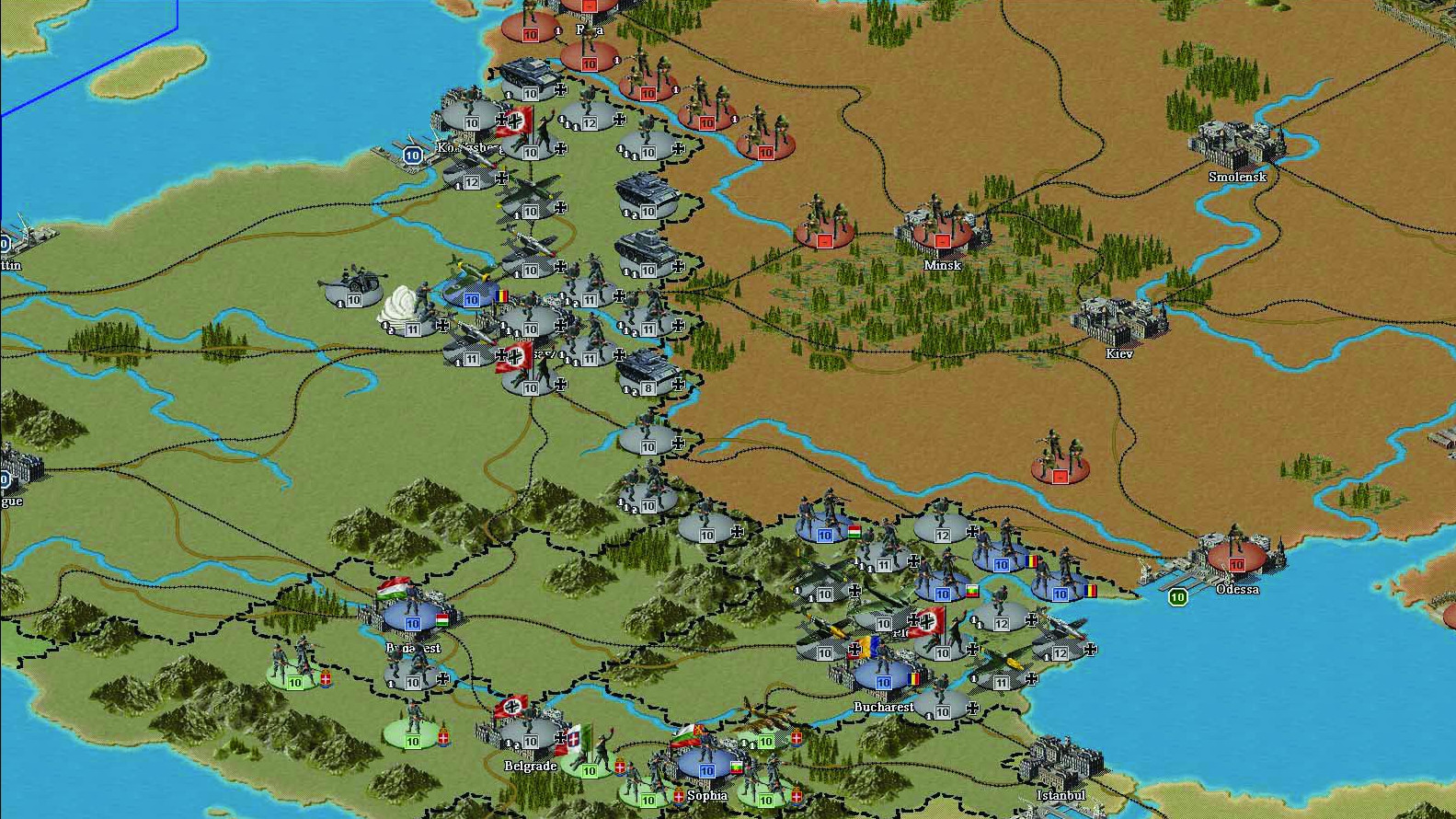
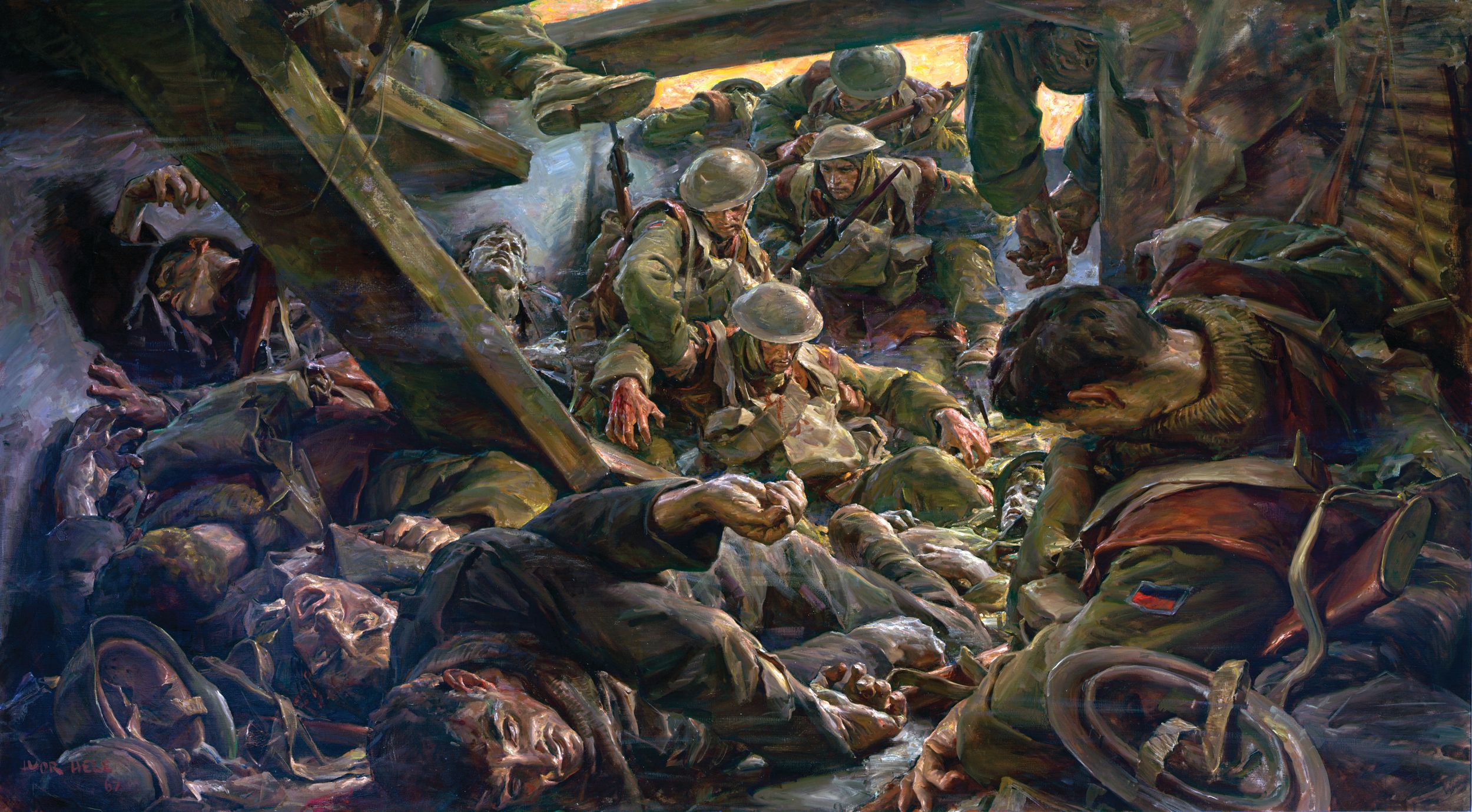
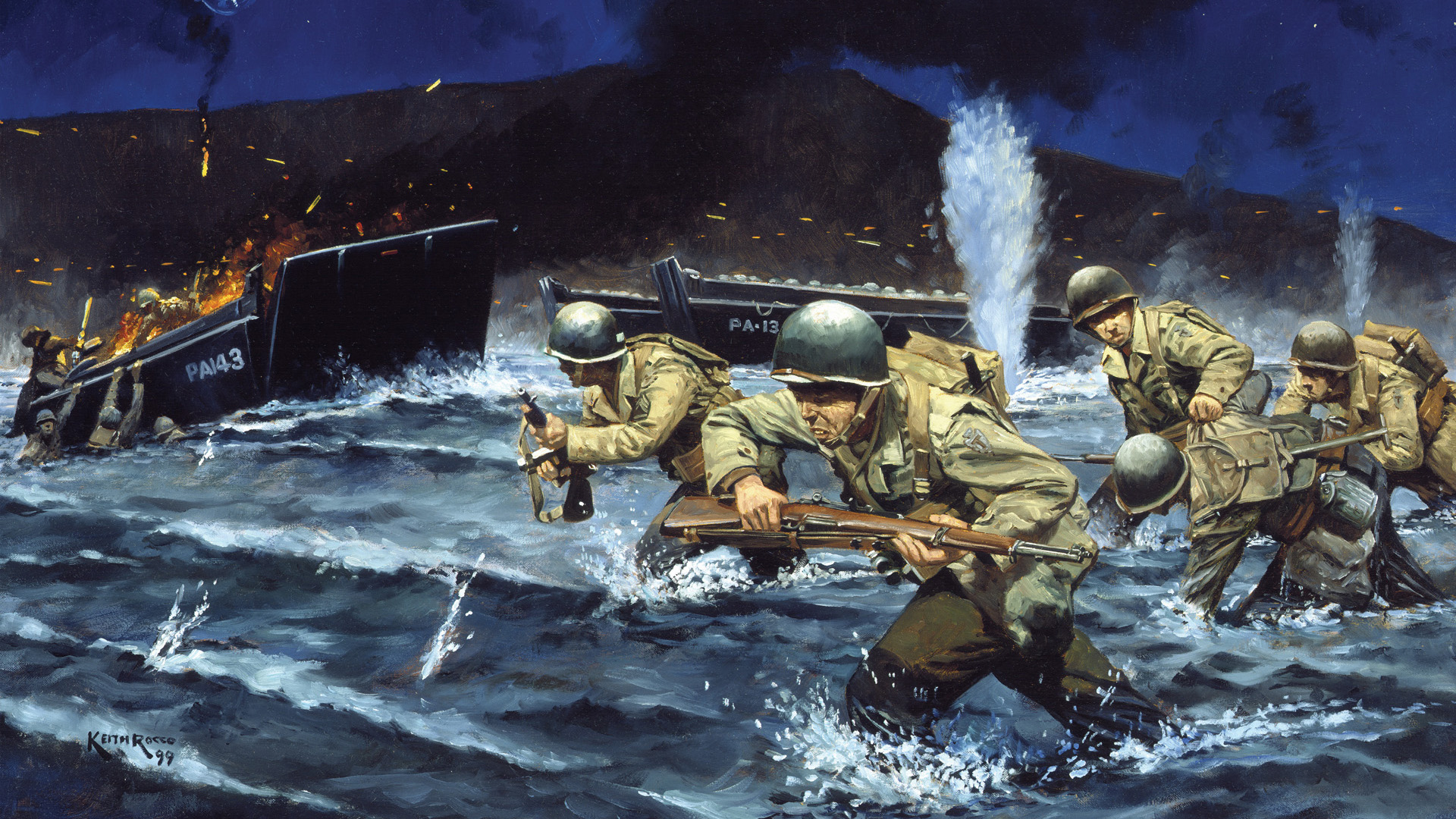
We’ll written. Ego and rashness lead to disaster.